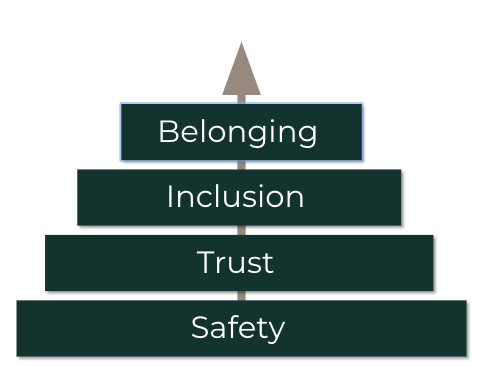Program Overview
Teaming is crucial to the success of today’s dynamic working groups.
- How can diverse perspectives and talents converge swiftly and effectively to tackle the world’s greatest challenges?
- How can managers foster an innovative and collaborative environment where ideas and people both thrive? How do these principles apply to hybrid teams?
With Effective Teaming, you can eliminate the guesswork in building exceptional teams for your company. Our science-based curriculum empowers you to systematically establish a foundation of trust and communication within your team. We equip you with the tools to cultivate high-performing teams that are agile, creative, connected, and resilient in the face of change.
Program Benefits
Why Effective Teaming works
When it comes to optimal team performance, who is on the team matters less than how the team works together—behavioral science, neuroscience and corporate research support this current understanding of teaming.
Based on this research, Effective Teaming cultivates the necessary skills to optimize how your team works together. Specifically, individuals and teams work best in an environment where they feel:
- More included
- Safe when learning something new
- Comfortable making contributions
- Encouraged to challenge the status quo
Discover what Google found on its quest to build the perfect team.
Learn about four components of improving team dynamics

- Belonging: The ability for team members to actively cultivate social and work connections between one another.
- Inclusion: A set of behaviors that enables each team member to feel valued and supported by others on the team and the team leader(s).
- Trust: The extent to which team members model reliability, credibility, and connection with one another.
- Psychological Safety: The belief among team members that interpersonal risk-taking and challenging the status quo is safe, acceptable, and even encouraged.
Teaming skills translate into business results
Sources: (1) Employee belonging was linked to increased performance [Harvard Business Review, 2019]. (2) Workplaces with more inclusion show better financial performance [McKinsey, 2020]. (3) People at high-trust companies report higher productivity than at low-trust companies [Harvard Business Review, 2017]. (4) Companies that show high psychological safety demonstrate an increase in collaboration [Accenture, 2021].
Program Structure
Audience
Individual contributors
LeadersDuration
3 – 3.5 hours
# of learners
50 maximum
Modalities
In-person live
Virtual classroom
